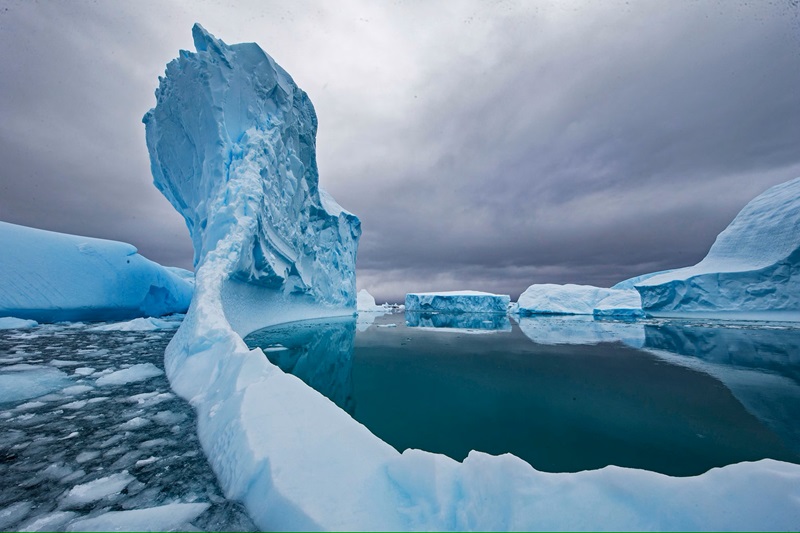
exploring 10 causes of global warmingexploring 10 causes of global warming
Last updated on July 8th, 2024 at 06:49 am
Global warming, characterized by a gradual increase in the Earth’s average temperature, poses significant environmental challenges and threatens ecosystems worldwide. Here, we delve into the 10 primary causes of global warming, shedding light on the factors driving this issue.
1. Power plants
According to research that was published in Environmental Research Letters, 73% of the carbon dioxide emissions from the worldwide electricity production sector were caused by 5% of the 29,000 power plants that were studied. The research refers to these power plants as “hyper-polluting,” locating them in Europe, India, and East Asia. One main cause is inefficiency.
In particular, coal plants are problematic. Although almost 8,500 coal-fired power stations are operating worldwide, they provide just ⅕ of greenhouse gas emissions. They are the biggest single source as a result. According to Smithsonian Magazine, a 27-year-old Polish power plant uses brown coal, a particularly “dirty” type of coal, to provide 20% of the country’s electricity. More than half of the electricity produced worldwide comes from coal plants, therefore we must find other energy sources soon.
2. Agriculture
The World Bank claims that one of the main causes of climate change is agriculture. It generates 19–29% of the world’s greenhouse gas emissions. The need for increased food production to feed the world’s expanding population will probably increase emissions. From whence are the issues coming? Given that methane is 26 times more potent than carbon dioxide, it is a serious worry.
Raising cattle and growing rice releases methane. Livestock is responsible for around ⅓ of agriculture’s global methane emissions. Additionally, a significant portion of agriculture’s emissions—roughly 11%—come from rice farmed in paddies. Another issue is nitrous oxide, which is 300 times more potent than CO2. Agriculture is the source of 60% of N2O emissions created by humans. It is created during the burning of crop leftovers and the fertilization of croplands.
3. Vehicles and transport
The Center for Biological Diversity estimates that transportation accounts for around one-third of greenhouse gas emissions in the US. There is more to transportation than just automobiles. Aircraft represent the third-largest source of pollutants in the US, accounting for 9% of emissions.
Through 2050, the aviation sector will probably generate 43 metric gigatons of CO2 worldwide. Nearly 3% of carbon dioxide emissions worldwide come from ships. Ship and boat emissions are predicted to rise by 250% by 2050 due to increased international trade. The world needs solutions including higher technological efficiency, changes in how people travel and move commodities, and lower-carbon fuel sources to cut emissions from autos and other forms of transportation.
4. Landfills
There are significant threats to both human health and the environment from landfills. One of the main causes is our old buddy methane. Methane gas is released during the breakdown process of organic waste, such as food waste, while it lies in landfills. NASA’s Jet Propulsion Laboratory and leak monitoring company Scientific Aviation have been conducting flyovers of California landfills since 2016. 43% of observed methane emissions were attributed to “super-emitters” landfills, according to a years-long assessment conducted by air-quality officials.
5. Offshore drilling
Petroleum is extracted from rock formations beneath the bottom by offshore drilling. Businesses dig wellbores. Because there are so many offshore platforms, it is crucial to measure the effects of offshore drilling.
Offshore drilling was thought to be effective for a while because of its low methane leakage. Nonetheless, Princeton University research discovered that far more methane was emitted into the atmosphere during the extraction of natural gas and oil in the North Sea than was previously thought.
6. Fracking
The method of fracking involves injecting a high-pressure liquid into underground boreholes and rocks. This creates openings for the extraction of gas and/or oil. Numerous dangers exist. Unsturdy oil or gas wells have the potential to seep into groundwater. Toxic materials are also used in fracking.
What about the link between global warming and fracking? Methane emissions may be rising as a result of fracking. Because of how rapidly the atmosphere reacts to methane, this conclusion may be made.
7. Deforestation
The significance of forests cannot be overstated. They provide food and medicine, are home to innumerable plant and animal species, and provide employment for millions of people. They are also crucial in the fight against global warming. Trees absorb carbon dioxide from the atmosphere, store it, and release oxygen during photosynthesis. Carbon makes up virtually all of the wood. All of that carbon is released when trees are destroyed. Less than 10% of the pollutants contributing to global warming as of 2021 is caused by deforestation.
8. Overfishing
Ocean health is greatly impacted by overfishing. Fleets have been traveling farther and deeper into the water, upsetting the ecosystem as fish populations become smaller. Global warming and overfishing are closely related. An analysis of mercury contamination, overfishing, and ocean warming in European seas was published in Frontiers in Marine Science in 2022.
The authors list many links between overfishing and global warming, citing earlier research. Because overfishing reduces the resilience of marine species, it raises the danger of ocean warming. Ocean warming consequently threatens biodiversity. Global warming is lessened by the storage of carbon emissions in greater quantities found in fish and marine life. Overfishing has to end to save the seas and their capacity to store carbon.
9. Melting permafrost
Soil that has remained at or below freezing for a minimum of two years is known as permafrost. Approximately 9 million square kilometers of the planet’s northern region are covered by this frozen ground. Permafrost stores twice as much carbon as the Earth’s atmosphere does in certain regions of the Northern Hemisphere. The National Snow & Ice Data Center estimates that 1 billion metric tons of carbon would be released annually, or 10% of the carbon thought to be contained in permafrost.
10. Consumerism
To be a consumer is to merely purchase goods. What connection does global warming have with shopping trips? 60% of the world’s greenhouse gas emissions are attributed to the production and consumption of products and services for the home, according to a 2015 research. Rich nations have the most influence since they produce and consume the greatest amount of goods. Even while a single purchase doesn’t have a significant influence on global warming, when everyone is unaware of this, the total amount spent mounts up very rapidly.







